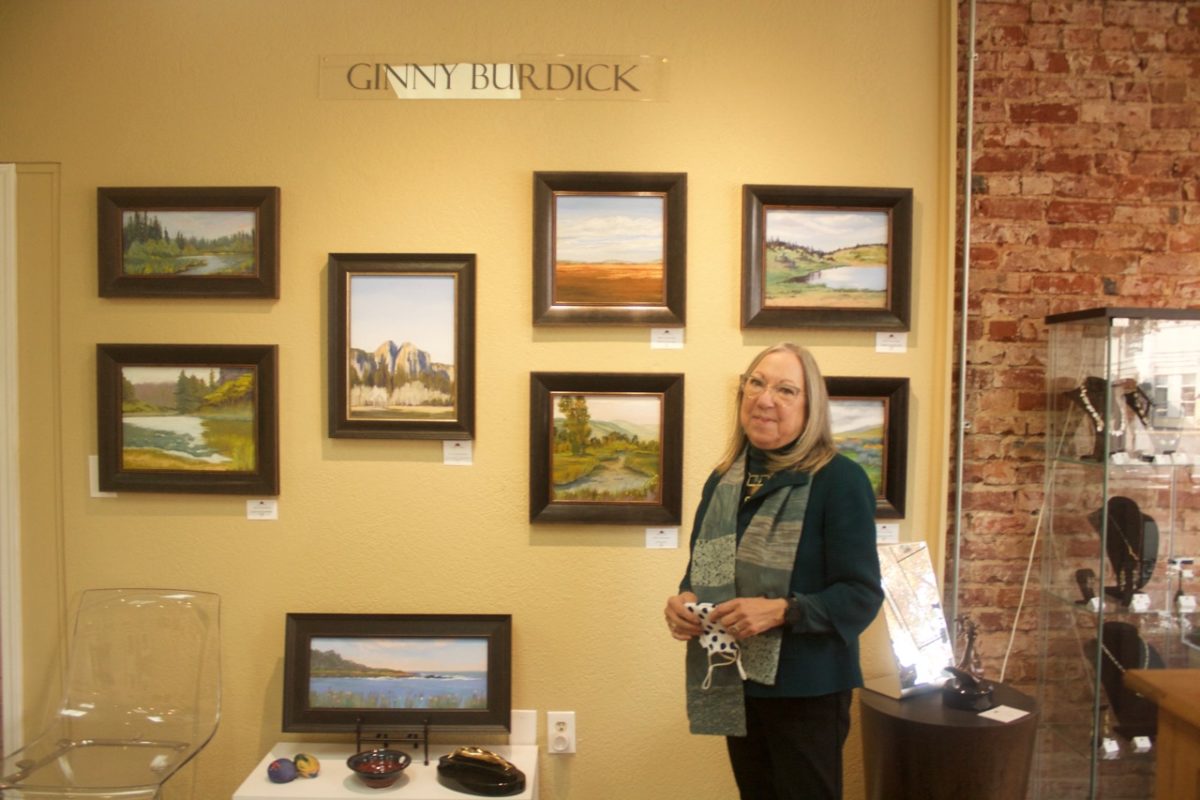
Sense of Place owner Ginny Burdick shows some of the artwork in her gallery. Sense of Place was closed for nearly six months with the start of the pandemic and is struggling to bring attention to her business. Photo by Donald A. Promnitz.
Written by Donald A. Promnitz
When California went into lockdown, Ginny Burdick had just re-hung paintings in A Sense of Place for a special show. What she didn’t know was that it would be their last one of the year.
“We had a reception that day, went home that night and we were closed,” Burdick said. “And so we were closed for almost six months.”
A Sense of Place has been in its current location just north of the Tower District for nine years now, but without a regular stream of revenue, Burdick says it’s become difficult to pay the costs of rent, utilities and other expenses. Galleries in the Valley and across the nation are struggling to adapt and overcome.
While some galleries remain closed, Burdick and others have determined it safe to reopen. This, however, does not stop the fact that customer traffic has severely dropped, especially with the cancellation of events like Art Hop, which were major sources of sales. Receptions alone made up 70% of the revenue, with the artists themselves frequently coming to them.
Like many of her peers, Burdick has tried to make up the lost foot traffic through online sales. She has a YouTube channel where she showcases featured artists and their paintings, but it’s difficult to sell artwork online, in part because it relies on an impulse buy.
“You try the virtual,” Burdick said, “But art is something that you want to buy when you see it and it’s hard and difficult to sell art on the web.”
For artists with national recognition, this is somewhat easier, but locally, it often requires seeing the painting up close and in person to make that decision. This includes local artists like Kathy Gillis, a friend of Burdick’s whose work hangs in A Sense of Place.
“You have to realize, the consumer or the patron is choosing something not like a pair of shoes,” Gillis said.
Gillis added that the patron needs to feel a connection to the artwork in order to make an investment—with an in-person look often being a crucial component of the buying experience.
But some artists are still seeing their paintings sold and their art leaving the walls. At Starving Artists Bistro, partner Bob Sullivan says while things are slower, business has by no means gone to a complete halt.
According to Sullivan, one of his artists was just able to sell three paintings between October and November. Their ability to sell, he said, was a combination of their doubling as a restaurant and for the windows that make up the whole front of the store, allowing passersby to see the displays, along with the people picking up their to-go orders. A good location in the Fort Washington area of Northeast Fresno has also helped, but Sullivan acknowledged that he’s been an exception to a difficult norm
“It’s been a heartbreaking kind of year, but it’s been a hopeful year and a year that really teaches you to just keep the faith,” Sullivan said.








